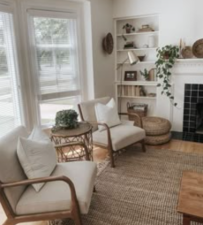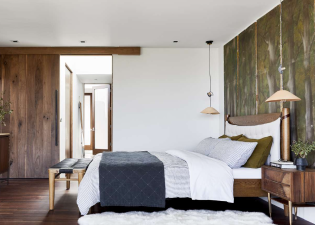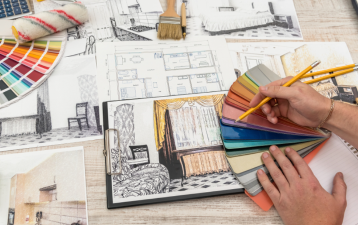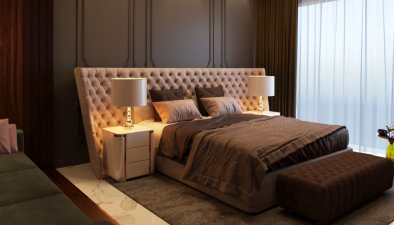Which Interior Styles Never Go Out of Fashion?
In the home decor market, choosing a decorating style that is both aesthetically pleasing and timeless is a crucial decision for many homeowners.
A timeless decorating style must not only meet personal aesthetic preferences but also be practical, adaptable, and visually appealing, maintaining its elegance and comfort over time.
Modern Minimalist Style: The Perfect Blend of Classicism and Practicality
- Style Characteristics
Modern Minimalist style is characterized by simplicity, clarity, and functionality, emphasizing the "less is more" design philosophy. It creates a spacious, bright, and functional living environment through clean lines, simple color palettes, and open spaces. Common color palettes include neutrals such as white, gray, and beige, combined with materials such as wood, metal, and glass, creating a simple yet warm atmosphere.
In terms of furniture selection, the modern minimalist style emphasizes functionality and comfort. Furniture designs are typically simple and elegant, eschewing excessive decorative details. In terms of spatial layout, open-plan designs (such as the combination of an open kitchen and living room) are favored by many young families. Furthermore, the modern minimalist style emphasizes storage, using built-in cabinets and concealed storage to maintain a tidy and organized space.
- Durability Analysis
The enduring appeal of modern minimalist style stems primarily from its clean design language and use of neutral tones. These elements are timeless and adaptable to changing trends and personal preferences. Furthermore, modern minimalist style offers flexibility, allowing homeowners to adjust the style and maintain a fresh feel by replacing soft furnishings (such as curtains, carpets, and decorative paintings) without significantly altering the interior design.
Modern minimalist style is particularly well-suited for small and medium-sized homes, as it maximizes space and creates a spacious illusion. Furthermore, its relatively low renovation costs make it a popular choice for many young people and first-time homebuyers.
- Suitable Scenarios
• Suitable for: Young people pursuing a simple lifestyle, urban professionals, and families on a budget.
• Suitable for: Small and medium-sized apartments and duplexes.
• Precautions: Avoid overly minimalist spaces that may create a cold, neutral atmosphere. Add warmth with wooden elements or greenery.

Nordic Style: The Timeless Charm of Nature and Comfort
- Style Characteristics
Originating in Scandinavia, the Nordic style embodies simplicity, naturalness, and comfort. Characteristics of the Nordic style include bright color palettes (such as white, light gray, and natural wood), abundant use of natural light, and minimalist yet highly functional furniture. The Nordic style often utilizes natural materials such as wood, wool, cotton, and linen, paired with geometric soft furnishings to create a warm and relaxing atmosphere.
In terms of spatial layout, the Nordic style emphasizes openness and transparency, emphasizing the connection between people and nature. Large windows and greenery often enhance the natural feel. Lighting design is also an important component of the Nordic style, with soft, warm lighting enhancing the comfort of the space.
- Durability Analysis
The Nordic style's durability lies in its simple yet simplistic design philosophy. Bright neutral tones and natural materials ensure timelessness, while highly functional furniture ensures practicality. Nordic soft furnishings (such as pillows, rugs, and lighting) are easily interchangeable, allowing homeowners to update the style of their space and maintain a fresh feel.
The Nordic style is popular for its fresh, bright visuals and relatively low renovation costs, particularly among young families and renters. Furthermore, the Nordic style has low requirements for apartment size, adapting well to both small and large apartments.
- Suitable Scenarios
• Suitable for: Young people seeking a natural and comfortable environment, renters, and families who prefer a fresh style.
• Suitable for: All apartment types, especially small apartments and those with good natural light.
• Notes: Pay attention to lighting design and soft furnishings to avoid a monotonous look.

Light Luxury: A modern, understated luxury style
- Style Characteristics
Light luxury has emerged in the home decor market in recent years, emphasizing a sense of understated luxury and refined living. Its design features include a combination of premium materials (such as marble, metal, and suede), exquisite detailing, and soft yet richly layered colors (such as champagne gold, dark blue, and gray). Light luxury emphasizes quality, with furniture and accessories typically featuring a modern feel while incorporating subtle vintage elements.
In terms of spatial layout, light luxury combines openness with sophistication, often using elements such as mirrors and metallic moldings to enhance the sense of depth and modernity. In terms of lighting design, decorative fixtures such as chandeliers and wall lamps are crucial components of the light luxury style.
- Durability Analysis
The light luxury style's durability lies in its emphasis on high-quality materials and exquisite details. These elements not only enhance the space's sense of class but also withstand the test of time. Light luxury style often features subdued color palettes, avoiding the aesthetic fatigue caused by overly bright hues. Furthermore, light luxury design emphasizes personalization, allowing owners to express their personal taste through customized furniture and decor, enhancing the uniqueness of their space.
Light luxury is favored by young middle-class individuals who pursue a quality lifestyle, and is particularly well-suited for families who value a sense of ritual and social space. However, its relatively high renovation costs make it suitable for owners with a more relaxed budget.
- Suitable Scenarios
• Suitable for: Young middle-class individuals pursuing a quality lifestyle and socially engaged families.
• Suitable for: Medium to large apartments, villas, and duplexes.
• Considerations: Control the proportions of metal elements and decorative elements, avoiding excessive complexity.


